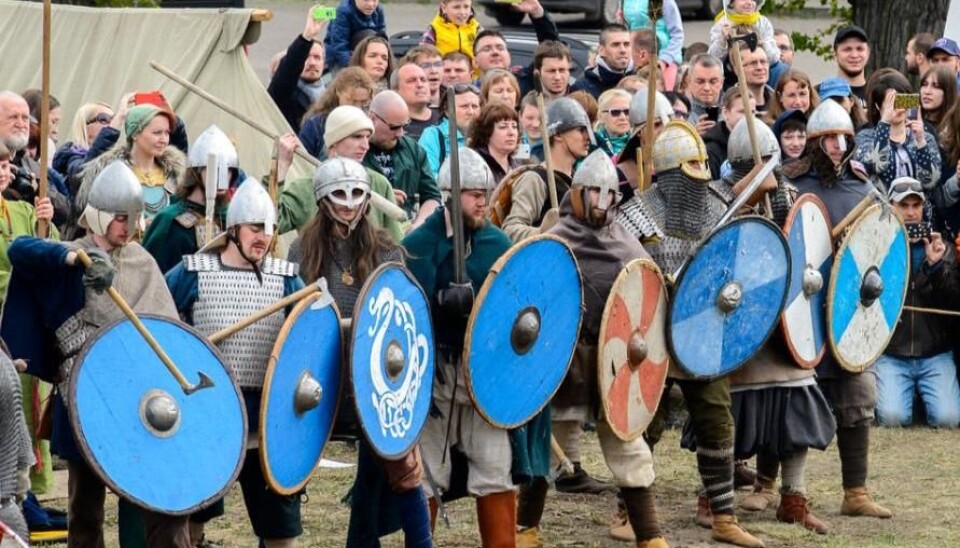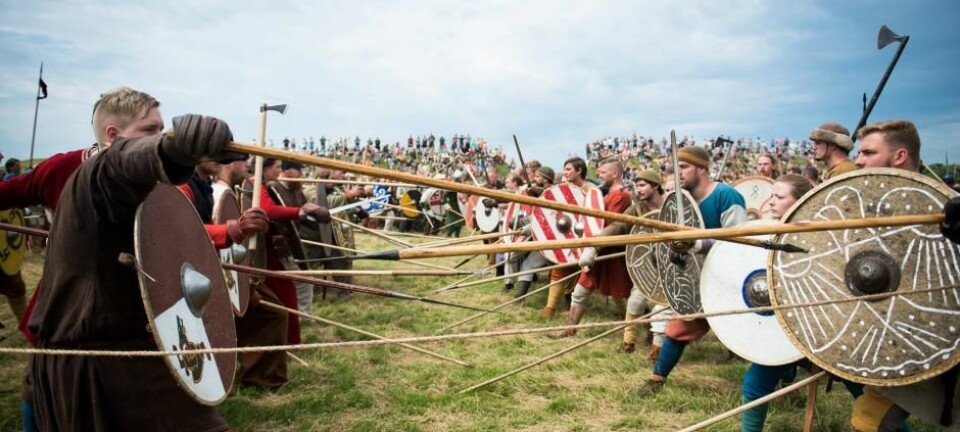
Did Vikings really fight behind a shield wall?
It could all be a big misunderstanding, says archaeologist.
The Viking shield wall is popular among enthusiasts and widely featured in TV shows and films. But the close formation of overlapping Viking shields probably never existed in the way that many imagine.
“It’s a widespread misunderstanding that the Vikings stood shield by shield and created a close formation in battle with their round shields,” says archaeologist Rolf Warming, director of the Society for Combat Archaeology. As part of his master’s thesis in prehistoric archaeology at the University of Copenhagen, Warming has criticised the popular theory that the Vikings fought behind a shield wall.
He bases his conclusion, among other things, on his own experiments with Viking swords and shields, which indicated that the shields were too weak to resist the repeated blows that a shield wall would sustain.
The best defence is a good offence
Adorned in armour and helmet, Warming undertook an archaeological experiment with an authentic reconstruction of a Viking Age round shield. By letting a combat assistant attack him with a sharp replica of a Viking sword in simulated combat scenarios, Warming was able to test the effectiveness of different shield uses in terms of shield construction and durability.
The results were not in favour of the shield wall.
“It showed that there must have been many more disadvantages than advantages since shield-wall conditions do not allow the defender to deflect incoming attacks,” says Warming.
His shield sustained more damage in the passive wall stance when compared to a strategy of using the shield actively to fend off the opponent’s sword.
Warming also reviewed the historical sources to find references to or descriptions of Viking shield walls. However, while the shield wall is mentioned in a few cases, the sources do not provide any description of the formation. Rather than being a special tactic, it seems to be a more of a poetic term simply used to describe a large array of warriors, says Warming.
He believes it more likely that the Vikings were much more individual fighters, who fought against their enemies in loose formation, using shields to intercept incoming blows or to deliver blows with the edge of the shield.
“The fabled shield wall –- at least as the close quarter tactic is currently understood -- has no basis in the literature nor in practical application,” says Warming.
Viking fighting style should be revisited
Warming cannot say exactly where this misunderstanding originated, but his supervisor, Henriette Lyngstrøm, who is an associate professor in archaeology at the University of Copenhagen, is convinced by his research.
“The notion that Vikings fought shoulder to shoulder and waited for incoming blows seems unsound to me. Warming’s conclusions make much more sense,” says Lyngstrøm.
“When this becomes recognised in academic circles it will definitely change the notion of how the Vikings fought,” she says.
Next up: large scale re-enactment
The new research spells trouble for Viking reenactors fond of the shield wall formation.
At Trelleborg Viking fortress, lead curator Anne-Christine Larsen is not completely convinced by Warming’s results, but says it will be relevant and exciting to test on a larger scale.
Every year, an army of reenactors gather to fight as Vikings – often using tactics such as the shield wall. Larsen says it will probably stay that way.
“Warming’s experiments were based on single combat, so we’re still missing knowledge on how the shield wall worked on a larger scale, with an entire army,” she says.
But Larsen emphasises the importance of following the newest results in the area, so she and her colleagues have followed Warming’s research closely.
“Here at Trelleborg we try to recreate the Viking Age in the most authentic way possible. So if an experiment with an entire army shows that the shield wall didn’t actually work in reality, then the warriors will definitely be open to changes,” says Larsen.
------------------------
Read more in the Danish version of this story on Videnskab.dk










